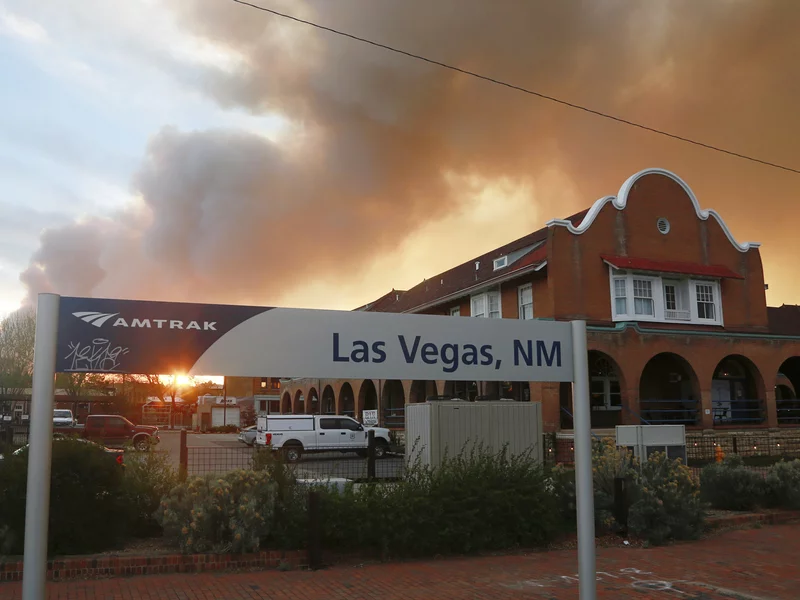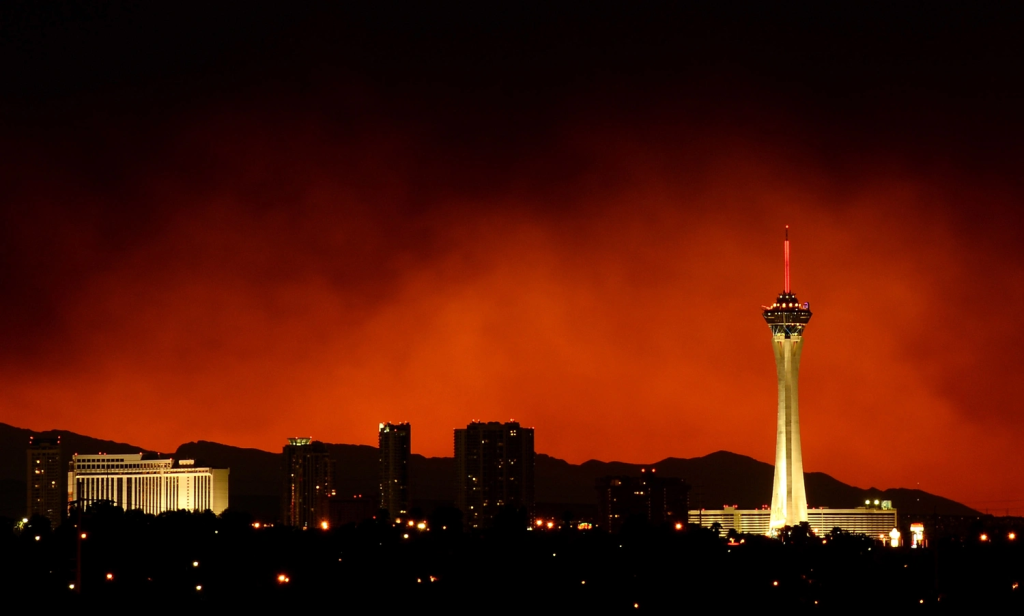Overview of the Wildfire Crisis Across the West Coast
As wildfires continue to devastate parts of Canada and the western United States, regions like Las Vegas are experiencing severe air quality issues due to the pervasive wildfire smoke. With fires burning in states including California, Oregon, Arizona, and Washington, along with numerous blazes in Canada, the smoke and haze have spread far and wide, prompting air quality alerts and advisories in several areas.

Major Wildfires by State
As of Wednesday, there were 79 large active wildfires across the United States, burning over 1.4 million acres. Evacuation orders are in effect for several communities in the Northwest, Northern Rockies, and the Great Basin.
- Oregon: Home to 31 large fires, the Durkee Fire near the Oregon-Idaho border is the largest active blaze, burning nearly 400 square miles. Other significant fires include the Cow Valley, Falls, and Lone Rock fires.
- California: The state is battling 12 large wildfires, including the Lake Fire in Santa Barbara and the Park Fire, which has exploded in size, threatening thousands of homes and drawing comparisons to the infamous Camp Fire of 2018.
- Arizona: The Black Fire east of Phoenix and the Romero Fire west of Dudleyville are among the state’s largest blazes.
- Washington: The Pioneer Fire is the largest in the state, burning over 30,000 acres.
- Canada: British Columbia and Alberta are grappling with around 600 active wildfires, with some leading to massive evacuations.
Air Quality Alerts and Advisories

Unhealthy air pollution from wildfire smoke has triggered air quality alerts across the western U.S. and Canada.
- Oregon: Alerts have been issued for eastern counties, including Harney, Malheur, Grant, Baker, and Morrow. Smoke from the Durkee Fire is affecting Boise, Idaho.
- Washington: The Colville Reservation and Chelan County are under air quality alerts.
- Canada: An advisory was issued for Calgary, Alberta, due to high-risk wildfire smoke.
Impact on Las Vegas
Las Vegas has not been spared from the impact of these widespread wildfires. The smoke has significantly degraded air quality, prompting health advisories. Residents are advised to limit outdoor activities, particularly vulnerable groups such as children and the elderly.
Safety Measures for Dealing with Wildfire Smoke
To protect yourself from wildfire smoke, consider the following tips:
- Monitor Air Quality: Stay informed about air quality conditions and forecasts in your area.
- Stay Indoors: Keep windows and doors closed to minimize indoor pollution.
- Use Air Purifiers: High-efficiency filters labeled “MERV13” or higher are effective in removing smoke particles. Portable HEPA air purifiers can also help.
- Avoid Outdoor Activities: Limit heavy exertion outdoors and avoid activities that increase indoor pollution, such as burning candles or using wood-burning appliances.
- Wear Masks: If you need to be outside, use an N-95 or P-100 respirator mask for some protection.
Cleaning Up After a Wildfire
When cleaning ash after a wildfire, wear protective gear, including goggles and an N-95 or P-100 mask. Avoid skin contact with ash, and use gloves, closed-toe shoes, socks, and long pants and shirts. Clean ash from pets and outdoor belongings, mist floors with water before sweeping, and avoid using leaf blowers. Dispose of ash properly and avoid letting contaminated water enter storm drains.
The ongoing wildfires in the western U.S. and Canada are causing significant air quality issues, affecting millions of people, including those in Las Vegas. As the fires continue to burn, it is crucial to stay informed and take necessary precautions to protect your health and safety. With climate change exacerbating these fire conditions, it’s more important than ever to be prepared and vigilant.
Stay safe and stay informed as we continue coverage you with the latest info through this fire season.


